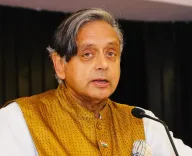How Can New Delhi Turn US Tariffs Into Reform Momentum?

Synopsis
Key Takeaways
- India must adapt to US tariffs by diversifying exports.
- Domestic capacity-building is crucial for independence.
- UPI showcases India's potential in digital finance.
- Self-sufficiency in technology and defense is vital.
- Incremental reforms won't suffice; a generational leap is needed.
New Delhi, Aug 20 (NationPress) India has ample reasons to feel discontented with US President Donald Trump’s coercive tactics through tariffs, yet the crux lies in how New Delhi can transform this challenge into a catalyst for substantial reforms, a report indicated on Wednesday.
The report, released by India Narrative, states that the way forward is not in mourning over perceived betrayal, but in solidifying independence.
By expediting the enhancement of domestic capabilities, diversifying supply chains, and fostering innovation, India can convert strategic autonomy from a precarious dream into a steadfast reality, the article highlighted.
A recent Crisil Intelligence report suggests that to alleviate the repercussions of US tariffs, India could boost exports to alternative markets while also taking advantage of the recently sealed trade agreement with the UK and a prospective deal with the European Union (EU).
The new tariffs imposed by the US are projected to impact MSMEs, which represent nearly 45 percent of India’s total exports, as indicated by the Crisil Intelligence report.
Currently, the US enforces a 25 percent tariff on Indian goods. An additional 25 percent tariff will come into effect on August 27, increasing the total tariff on Indian products to a significant 50 percent.
The India Narrative report asserts that 'India cannot rely on special considerations from Washington, nor on appeals to fairness.'
'It must brace itself for a landscape where every nation, whether ally or adversary, will use trade and technology as tools of influence,' it added.
India stands as a global frontrunner in digital payments. The Unified Payments Interface (UPI) has revolutionized the financial sector by diminishing dependence on Visa and Mastercard.
UPI’s integration with RuPay now constitutes nearly 30 percent of credit card transactions this year, a rise from 10 percent last year.
'UPI guarantees that India maintains control over its payments infrastructure, safeguards critical data, and advances financial inclusion on its own terms. It exemplifies that India can withstand external pressure when it builds homegrown platforms,' the report argued.
The moment is opportune for India to replicate the UPI success across other vital sectors—aiming for self-sufficiency in semiconductors, constructing sovereign AI frameworks, developing indigenous defense technologies, and achieving energy independence.
The report mentions Prime Minister Narendra Modi has indicated progress in this area by holding a high-level meeting on 'next-generation reforms' and pledging to simplify the Goods and Services Tax.
'However, incremental reform will not be sufficient. To endure the coercive strategies of dominant powers, India needs a generational leap in capacity,' the article stressed.









